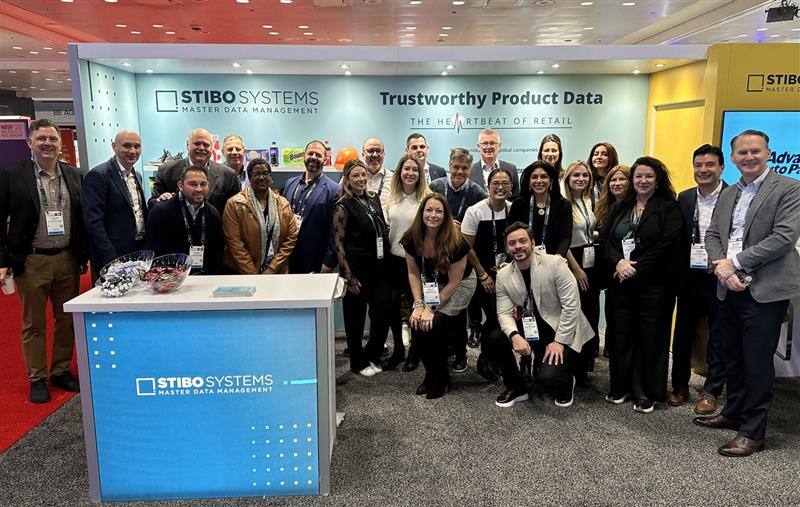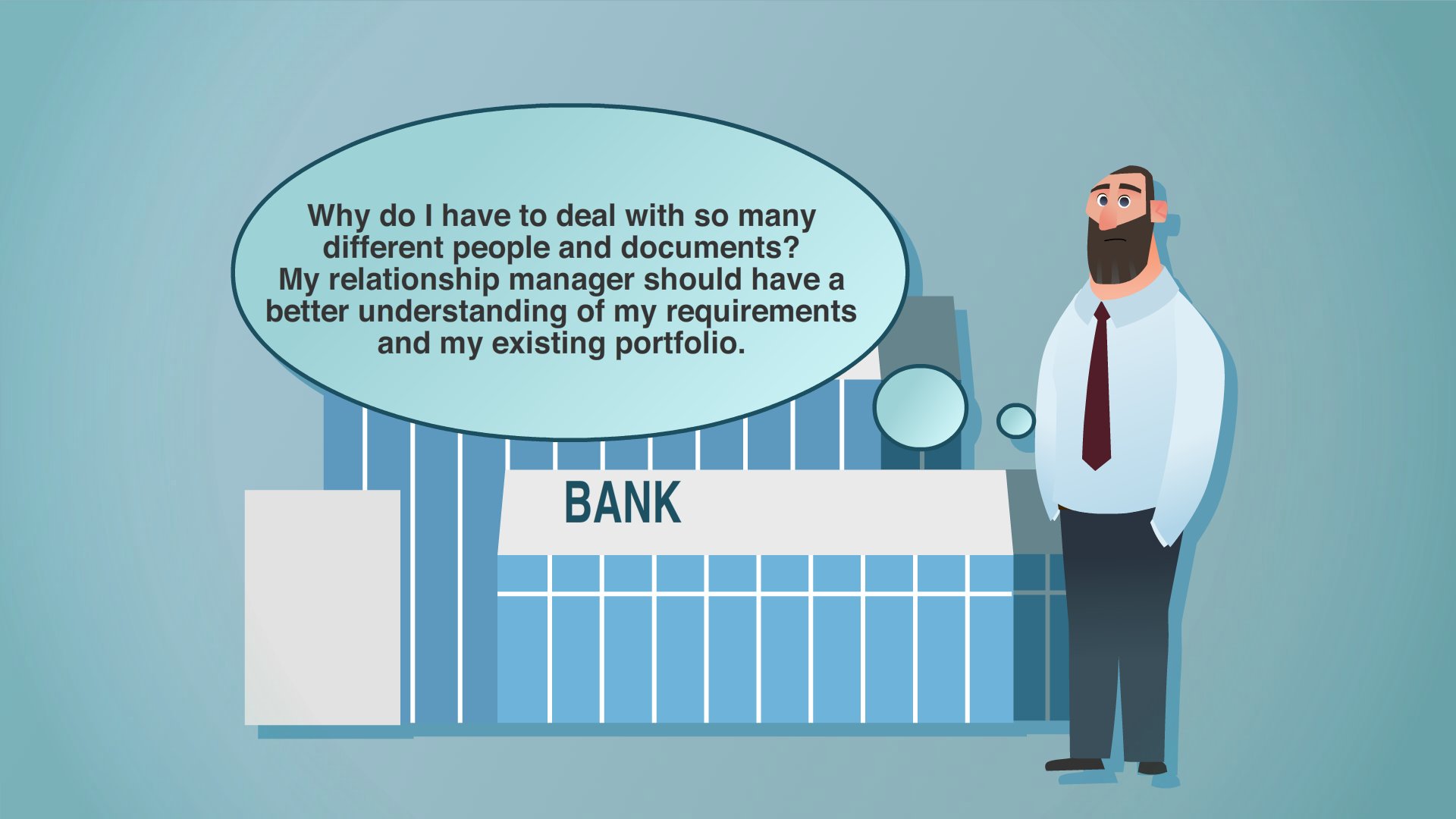This guide is for any board member tasked with the high-stakes decision to select the right product experience (PX) software or product information management (PIM) solution for their organization.
This software can make or break product data – even your reputation. Not to mention that it will shape your organization's competitive position for years to come.
But for many organizations, these technology investments fail to deliver expected returns.
Be aware that this is not just another software procurement project. The stakes are high for PX platforms because these directly impact your most critical business metrics: customer acquisition costs, lifetime value and competitive differentiation.
Consider the organizational disconnect you are navigating:
- Your technical leadership focuses on system architectures and integration capabilities, but may underestimate business transformation requirements.
- Your marketing teams grasp customer expectations but may not always appreciate the data architecture or master data management (MDM) needed for consistent cross-channel or omnichannel experiences.
- Finance and operations see the budget impact but may not fully grasp how platform limitations could constrain future business model innovations and product lifecycle management (PLM).
Product experience platforms vary a lot in capabilities, implementation complexity and operational requirements. The vendors are going to give you compelling demonstrations, but it can be hard to tell genuine functionality from sales-speak. So, you need a basic understanding of this type of solution, including how it delivers real results and what to look for.
In this blog post, you will get just that – with no fluff. And don’t miss the checklist right at the end – it may be worth keeping with you throughout the process so you don’t get lost.
Let us start from the top, with why you need PX software in the first place.
INTERACTIVE EXPERIENCE
Better product experiences. And better conversions.

The financial cost of poor product data
Product data quality issues appear directly in your financial statements. The connection isn't always obvious, but the impact is real and measurable.

Poor product data costs you revenue immediately
Incomplete product information drives customers away. They encounter missing specifications, inconsistent descriptions or fragmented digital asset management (DAM) across sales channels and simply go elsewhere, causing you to lose sales that should have been straightforward conversions.
Seasonal categories depend on precise timing. For example:
- Fashion retailers know delays in product data preparation can cost entire quarters of projected sales
- Electronics manufacturers have the same problems with new products and holiday launches
Consistent product data builds customer loyalty
If you can offer consistent product experience management (PXM) across all touchpoints, you can build stronger customer relationships. So, serve your buyers the same informative product details and accurate images everywhere, and you earn more of their trust. By making these digital commerce updates, you’ll see noticeable changes in customer behavior:
- They'll return more frequently
- They'll spend more per transaction
- They'll tolerate premium pricing better
Automation reduces your operational costs significantly
Manual product content creation can eat up significant resources. You probably employ teams to write product descriptions, resize images and update specifications across multiple systems. But with automated workflows, you reduce these costs substantially. You also remove human errors that create downstream problems, such as:
- Inaccurate product details and descriptions that lead to customer service calls
- Wrong SKUs or specifications that cause product returns
Quality product data supports premium pricing strategies
With detailed specifications, professional imagery and complete feature descriptions, customers understand your premium value propositions clearly, including why your products cost more than alternatives.
If you have poor product presentations, on the other hand, you force price competition – and end up competing primarily on cost rather than value.
Better product data reduces customer acquisition costs
Search engines reward detailed, accurate product information and rich DAM with higher rankings. This improves your search engine optimization (SEO), making your products more discoverable through organic search results without expensive paid advertising campaigns.
Discover your product experience maturity level

Poor product data management creates hidden business risks
The price you pay for poor PIM system management and fragmented product data includes much more than lost sales.
All kinds of hidden risks accumulate across your organization and product ecosystem, draining finances in ways that are hard to track – but expensive to fix.

Inaccurate listings wreak havoc downstream
Inaccurate product listings generate all kinds of costly problems. Customers receive products that don't match online descriptions. They initiate returns, demand refunds and contact customer service for explanations.
This causes your customer relationship management (CRM) teams to spend time resolving issues that accurate product data could have prevented. Returns processing costs money – shipping, handling, restocking and selling returned items at reduced prices.
Inconsistent information harms your brand
When your product information doesn't match across channels, your whole brand loses credibility. Customers notice when specifications are different between your website and retail partner sites, including:
- Different product dimensions on different platforms
- Varying color names for identical products
- Conflicting availability information
Unfortunately, once your customers lose confidence in your product information accuracy, they start wondering if they can trust anything you say.
Manual processes lead to operational bottlenecks
Manual content processes create bottlenecks that slow time-to-market for product launches and limit market expansion. Your teams spend weeks preparing product information for new channels instead of focusing on strategic initiatives. These bottlenecks may include any of the following:
- Product launches get delayed because content creation cannot keep pace with business demands or efforts to streamline processes
- You miss seasonal opportunities because your automated workflows and merchandising processes cannot scale efficiently
- Geographic expansion becomes a real challenge when print catalogs and product SKUs must be manually managed
For each new market, you need localized product information and compliance with local regulations. Manual processes make international growth prohibitively slow and expensive.
Customers keep demanding ever better product information
Your customers now approach product research differently than they did even five years ago. They expect a lot of information before making purchase decisions, and they will find competitors who provide it if you do not.

Buyers demand detailed specifications upfront
Modern buyers research products thoroughly before purchasing. They compare specifications across multiple brands, read reviews and seek detailed technical information.
Consumer behavior has shifted toward informed, data-driven decision-making rather than impulse purchases.
Business buyers, in particular, expect a high degree of product data accuracy. They rely on detailed specifications to verify compatibility with existing systems, confirm compliance with internal standards and to justify any procurement decisions to stakeholders.
Mobile and voice search change content requirements
In mobile commerce, you need product data that is optimized for small screens and voice search queries. Your product information has to work effectively when customers browse on smartphones or ask voice assistants for product recommendations.
Voice search changes how customers find products. They ask natural language questions instead of typing keywords. So, your product data needs to answer these conversational queries effectively.
B2B customers expect consumer-grade experiences
B2B is no longer “Boring-to-Boring". Enterprise customers now expect the same quality product experiences they get as consumers.
When businesses shop around for industrial equipment or professional services, they also want detailed imagery, complete specifications and intuitive navigation. In other words, the line between B2B and B2C product experience expectations has largely disappeared.
Rich media drives conversion performance
Videos and high-quality images do magic for conversion rates across all product categories. Customers want to see products in use, understand scale and context and really examine the details before purchasing.
There are different reasons why rich media matters so much:
- Product videos demonstrate functionality and use cases
- Multiple product angles show construction quality and design details
- Lifestyle images help customers envision products in their environments
- Technical diagrams clarify specifications and compatibility
Static product descriptions are nowhere near enough if you want to live up customer expectations.
By now, you should have a decent idea of what the stakes are and why you need PX software. So let us move on to what those tools do to meet – or exceed – the expectations of your organization and your customers.
CRASH COURSE
3 Steps to Better Product Experiences

Look for modern product experience platforms that enable scale and growth
These days, PX platforms are not just simple content management tools. They are more similar to central infrastructure that lets your business expand quickly and operate efficiently at an enterprise scale.
The capabilities vary greatly between vendors – as do the requirements of the organizations using the solutions – but let us go through what you should generally be looking for.

Centralized data management supports market expansion
The best solutions maintain a single source of truth for your product information. One that feeds all touchpoints, making growth more predictable and manageable.
When you enter new markets, localization becomes a key differentiator. Some platforms handle product attribute translation and local regulatory adaptation automatically. With others, you need extensive manual work for each new geography.
New channel partnerships launch faster when your product data already exists in structured, syndication-ready formats. Not all platforms prepare data for easy distribution.
Automated syndication maintains consistency at scale
Advanced platforms give you automated content syndication that maintains consistency across hundreds of retail partners without manual intervention. Your product information flows automatically to partner systems, marketplaces and distribution channels.
Changes should propagate instantly across all channels. When you update a product specification, pricing or availability status, every touchpoint receives the same information simultaneously. Basic platforms, though, may need manual updates or batch processing that creates delays.
Manual content distribution becomes unnecessary with sophisticated automation. You eliminate the usual errors and delays you get when different teams manage different channels.
System integration eliminates data silos
Be careful when you evaluate integration capabilities. The most effective platforms connect directly to existing ERP and commerce systems. That way, you eliminate data silos that would have created operational inefficiencies.
Product data should flow seamlessly between systems:
- ERP systems provide inventory levels and cost information
- Commerce platforms get updated product catalogs automatically
- Marketing automation tools get rich product content for campaigns
- Customer service systems show accurate product specifications
Please note that many vendors claim integration capabilities, but sometimes the implementation complexity can be a nightmare.
Real-time updates prevent operational errors
If your solution has real-time product updates, you don’t need to risk stockouts and pricing errors across the channels. When inventory levels change or prices get updated in your core systems, those changes should show up immediately wherever your products are sold.
Your customers see accurate availability information regardless of where they shop. Pricing stays consistent across all touchpoints, which means you don’t confuse your customers or lose competitive advantages.
Look for platforms that make operational errors rare rather than routine occurrences.
Discover your product experience maturity level

For regulatory compliance and sustainability reporting, you need structured product data
For you to be compliant, your product data systems have to capture extensive compliance information – across multiple jurisdictions.
You now need detailed product composition and sourcing information
Product composition transparency has become mandatory.
For example:
- For the EU's Chemical Strategy for Sustainability you need detailed substance disclosure
- Regulations in California and Canada mandate extensive ingredient listings
For that, the product data architecture needs structured fields and validation rules. Basic systems often don’t have capabilities for material declarations, restricted substance lists and audit trails.
The EU Corporate Sustainability Reporting Directive requires detailed documentation throughout your supply chain. You need to track sourcing practices, environmental impact assessments and labor conditions for regulatory reporting.
Retailers increasingly require sustainability data for product listings
Amazon requires packaging and carbon footprint data. Target uses sustainability scorecards that affect product visibility.
It is now common for retail partners and ecommerce platforms to mandate sustainability information for product placement. Information like:
- Recyclability percentages
- Carbon footprint calculations
- Ethical sourcing certifications
Exactly what data is needed varies between retail partners, of course. So, you need to be prepared for that. You need readiness to accommodate different sustainability reporting formats and generate retailer-specific documentation automatically.
Proper documentation prevents costly product recalls and regulatory violations
Product recalls are expensive – and it is not just the direct expenses. But with proper documentation, you reduce recall risk by maintaining complete traceability.
Your system should link finished products to raw material batches, production dates and facility information. When agencies identify contaminated ingredients, you can then quickly identify affected products and limit recall scope.
Remember that documentation gaps create legal liability. Incomplete records may lead to broader recalls and longer regulatory investigation timelines.
AI is completely changing product content management
AI capabilities have moved from experimental tools to practical solutions that solve real product data challenges. PX solutions are no different.

AI-automated content generation
AI-powered content generation creates product descriptions, specifications and marketing copy from structured product attributes and taxonomy. You input technical specifications and the system generates customer-facing descriptions that are optimized for your different channels.
The technology works particularly well for catalog-heavy industries:
- Fashion retailers and distributors use AI to generate size guides and care instructions
- Electronics manufacturers automate technical specification formatting for different retail partners
Your content will be far more consistent when AI generates it from centralized product data. Manual content creation often produces variations in tone and terminology that confuse customers.
AI also handles content localization more efficiently than traditional translation services.
AI-optimized product information for different customer segments and channels
AI can analyze customer data and behavior patterns to optimize product information for specific segments. The technology identifies which product attributes drive conversions and emphasizes those elements accordingly.
- For B2B customers, AI emphasizes technical specifications and compliance certifications
- For consumer audiences, the same product gets optimized to highlight ease of use and lifestyle benefits
Channel optimization works similarly: AI formats product information differently for marketplace listings versus branded ecommerce sites.
The systems get smarter, too.
They learn from performance data and continuously refine content optimization. Over time your product information becomes more effective, as AI spots patterns in customer engagement and purchase behavior.
SOLUTION SHEET
Product Experience Data Cloud Solution Sheet

Selecting the right product experience technology partner
Working with the right vendor determines your implementation success more than feature lists suggest. The partner you choose affects everything from your go-live timeline to your long-term operational efficiency. So, let us share a few words of advice on selecting a provider.

Evaluate the vendor’s financial stability and roadmap commitment
Check the vendor's financial health and investment in product development. Startups may offer innovative features but lack resources for enterprise support. Established vendors provide stability but may be slow to innovate.
Review their development roadmap and release history.
- Consistent feature releases indicate ongoing investment
- Stagnant platforms become liabilities as business requirements evolve
Ask about their customer retention rates and average contract length.
Implementation methodology determines project success
Vendors have very different implementation approaches. Some give you great project management and change management support alongside their software. Others simply deliver the platform with minimal guidance and expect your teams to figure out the rest.
The implementation team structure matters a lot. Implementation risk will be a lot lower if the team includes:
- Dedicated project managers
- Technical architects
- Industry specialists
Generic consulting resources often don’t have the specific expertise for complex enterprise deployments.
Ask for detailed implementation timelines from projects that were similar to yours in scope and complexity.
Support quality affects long-term operational costs
Post-implementation support varies from excellent to practically non-existent.
If you are a large organization, you need enterprise-grade support that includes:
- Dedicated customer success managers
- Priority technical support channels
- Regular system health reviews
- Proactive optimization recommendations
Critical business operations cannot wait days for a technical issue to be resolved. Some vendors guarantee response times and provide dedicated escalation procedures. Others have basic ticket systems with unpredictable response quality.
Some vendors guarantee response times and provide dedicated escalation procedures. Others have basic ticket systems with unpredictable response quality.
The solutions’ user community and its documentation also matter. If there is an active community, you get peer support and real-world implementation insights that the vendor documentation often misses.
CRASH COURSE
3 Steps to Better Product Experiences

A brief look at Stibo Systems’ product experience solution
Let us use our own (Stibo Systems’) PX solution as an example, or benchmark.
We developed Product Experience Data Cloud (PXDC) specifically for enterprise organizations that are managing complex product portfolios across global markets.
This is why many of the world’s leading organizations – like Adidas and Siemens – rely on us for better product experience.
Enterprise-grade PIM platform
PXDC serves as the product data management backbone for major consumer goods manufacturers worldwide.
Our solution handles the operational complexity that comes with managing thousands of products across multiple markets, channels and regulatory environments.
Avoid the bottlenecks that slow down growth at enterprise scale. Your teams can launch products faster and enter new markets without getting stuck in manual data management tasks.
Cloud-native architecture for fast scaling and integration
Since ours is a cloud-native solution, you don’t get the traditional infrastructure constraints that slow business expansion. You can scale operations quickly without hardware procurement or capacity planning delays.
You can also respond quickly to market opportunities or seasonal demand without waiting for infrastructure upgrades. Our solution simply grows with your business automatically, supporting product line extensions or international expansion.
Built-in API integrations ensure your systems and third-party tools connect seamlessly, enabling smooth data flow across your ecosystem. And deployment flexibility means you can implement gradually rather than undertaking disruptive full-scale migrations.
Built-in workflows for compliance, sustainability reporting and multi-channel syndication
PXDC comes with pre-configured workflows that address common enterprise requirements without custom development:
- Compliance documentation across different markets
- Sustainability data collection and reporting
- Multi-channel content syndication to retail partners and marketplaces
- Automated regulatory requirement management
These processes eliminate the custom development that typically delays new market entry. You can meet regulatory requirements or retailer mandates quickly because the operational infrastructure already exists.
Our solution handles these processes through standardized workflows that major retailers recognize and accept.
Proven track record with Fortune 500 companies
We support Fortune 500 companies across retail, manufacturing and distribution industries.
These organizations depend on PXDC for mission-critical product data operations that directly impact revenue and customer experience. The experience we have gained from supporting all these leading companies means faster implementations for you and fewer surprises during deployment.
Our solution keeps proving itself in the most high-volume, complex environments where system failures create immediate business impact.
A few final words
Product experience has become a competitive infrastructure. Your investment in high-level product data management will give you measurable advantages in customer acquisition, retention and operational efficiency.
When you choose a product experience software, your board plays a key role. It makes sure you prioritize well, and stay aligned across functions.
Product experience touches every customer interaction and needs coordination between IT, marketing, operations and compliance teams. Your PIM software selection will shape your operational efficiency for years ahead, as the world around you changes: the market, regulations and customer expectations.
Your checklist for selecting the right product experience software for your organization
Must-have platform requirements
Scalable infrastructure that grows with your business
- Cloud-native platform that eliminates infrastructure bottlenecks during expansion
- Guaranteed uptime that protects revenue during peak selling periods
Regulatory compliance that reduces business risk
- Automated compliance workflows that prevent costly violations
- Complete audit trails that satisfy regulatory investigations
- Built-in privacy controls that protect against data breach penalties
- Sustainability reporting capabilities that meet retailer requirements
Trusted data management that improves decision-making
- Single source of truth that eliminates conflicting product information
- Automated quality controls that prevent costly customer service issues
Seamless integration that maximizes existing technology investments
- Direct connections to ERP systems that eliminate manual data entry
- Automatic ecommerce synchronization that prevents pricing errors
- Marketplace syndication that expands reach without operational overhead
Must-have vendor requirements
Financial stability that protects your investment
- Vendor financial health verified with multi-year runway
- Enterprise support with guaranteed response times for critical issues
Implementation expertise that reduces project risk
- Proven track record with implementations at your scale and complexity
- Reference customers in your industry willing to discuss their experience
- Dedicated implementation team with industry-specific knowledge
Additional evaluation criteria
AI and emerging technologies that future-proof your investment
- Automated content generation that reduces manual workload
- Dynamic content optimization that improves conversion rates across channels
Continuous innovation capabilities that support market expansion
- Multi-region deployment that accelerates geographic expansion
- Performance benchmarks that support rapid catalog growth
- Scalable architecture that enables a quick response to changing market demands




































































































































































































